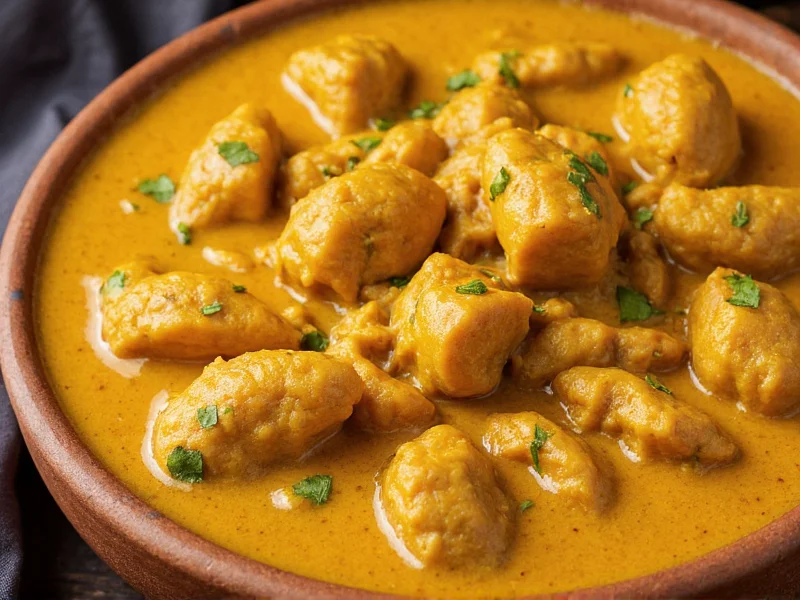Understanding the Term “Curry”
The word “curry” has become a catch-all term for numerous dishes across South Asia, Southeast Asia, and beyond, but it's important to understand that no single “curried” dish exists in traditional Indian cuisine. The term originated from the Tamil word “kari,” meaning sauce or relish. British colonists in India adopted and simplified the concept, creating the Western understanding of “curry” as a specific type of dish.
When asking what's curry made of, we must distinguish between:
- Curry dishes – Thousands of regional variations across Asia
- Curry powder – A British-invented spice blend
- Curry paste – Common in Thai cuisine
Core Components of Authentic Curry Dishes
Despite regional variations, most curry dishes share fundamental building blocks. Understanding what curry is made of requires examining these essential elements that create the complex flavors characteristic of these dishes.
| Component Category | Essential Ingredients | Function |
|---|---|---|
| Spice Base (Masala) | Turmeric, coriander, cumin, fenugreek, mustard seeds | Provides depth, color, and foundational flavor |
| Aromatics | Onions, garlic, ginger, curry leaves | Creates flavor foundation and complexity |
| Liquid Element | Coconut milk, yogurt, tomato puree, broth | Determines sauce consistency and texture |
| Thickening Agents | Roasted spices, ground nuts, lentils | Creates rich, cohesive sauce |
| Protein/Vegetables | Chicken, lamb, fish, chickpeas, potatoes | Main components of the dish |
Curry Powder vs. Freshly Prepared Curry
One of the most common misconceptions about what's curry made of involves curry powder. Commercial curry powder is a Western invention – traditional Indian cooking rarely uses pre-mixed curry powder. Instead, cooks create fresh spice blends for each dish.
Typical curry powder ingredients include:
- Turmeric (provides yellow color)
- Coriander (citrusy, floral notes)
- Cumin (earthy warmth)
- Fenugreek (slightly sweet, maple-like)
- Chili powder (heat)
- Cardamom (floral complexity)
- Cinnamon (sweet warmth)
- Mustard seeds (pungent depth)
While convenient, curry powder lacks the complexity of freshly ground spices. For authentic flavor, many chefs prefer making their own spice blends or using regional pastes like Thai red or green curry paste.
Regional Variations in Curry Ingredients
When exploring what curry is made of, regional differences are crucial. The ingredients vary significantly across culinary traditions:
| Region | Signature Ingredients | Distinctive Characteristics |
|---|---|---|
| South Indian | Mustard seeds, curry leaves, tamarind, coconut | Lighter, tangier, often vegetarian |
| North Indian | Garam masala, cream, yogurt, nuts | Richer, creamier, often meat-based |
| Thai | Lemongrass, galangal, kaffir lime, shrimp paste | Herb-forward, balanced sweet-sour-spicy |
| Japanese | Roux-based, apples, honey, mild spices | Sweet, thick, mild heat |
| Caribbean | Allspice, scotch bonnet peppers, thyme | Spicy, aromatic, with tropical influences |
What Gives Curry Its Yellow Color?
Many people wonder what gives curry its yellow color – the answer is primarily turmeric. This vibrant yellow-orange spice comes from the root of the Curcuma longa plant and contains curcumin, which provides both color and potential health benefits. While other spices like saffron can contribute yellow tones, turmeric is the dominant coloring agent in most curry dishes.
Creating Authentic Curry at Home
Understanding what curry is made of helps home cooks create more authentic dishes. Rather than relying solely on curry powder, try building flavor in stages:
- Bloom spices – Heat whole spices in oil to release flavors
- Sauté aromatics – Cook onions, garlic, and ginger until golden
- Add ground spices – Incorporate turmeric, coriander, and others
- Build sauce – Add liquid element and simmer for depth
- Finish with fresh elements – Stir in herbs or cream at the end
For those exploring basic curry recipe ingredients, start with a simple vegetable curry using onions, garlic, ginger, tomatoes, coconut milk, and a spice blend of turmeric, coriander, and cumin. This foundation can be adapted to create countless variations.
Common Misconceptions About Curry Ingredients
Several myths persist about what curry is made of:
- Myth: All curry is yellow – Reality: Curry colors vary from red to green to brown depending on ingredients
- Myth: Curry powder is traditional – Reality: It's a British colonial invention
- Myth: Curry is always spicy hot – Reality: Heat levels vary widely by region and recipe
- Myth: “Curry” is an Indian word for a specific dish – Reality: It's a broad term adopted from Tamil language











 浙公网安备
33010002000092号
浙公网安备
33010002000092号 浙B2-20120091-4
浙B2-20120091-4